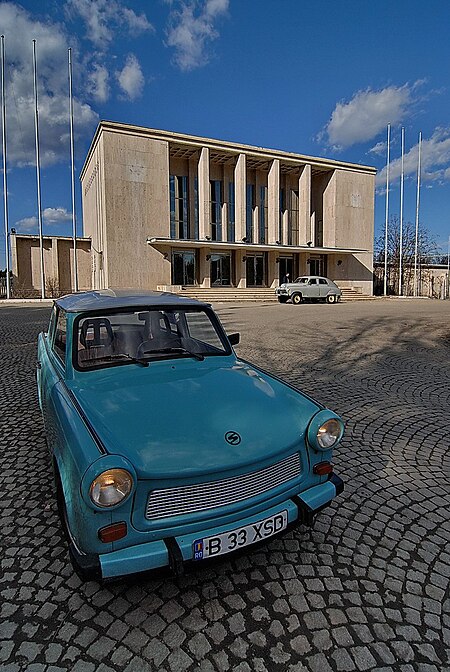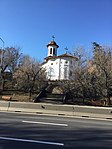Băneasa railway station
1886 establishments in RomaniaBăneasaRailway stations in BucharestRailway stations opened in 1886Romanian railway station stubs

Băneasa railway station is a railway station in Băneasa borough of Bucharest, Romania, in the northern part of the city. It is situated on the main line to the Black Sea coast. The railway station was inaugurated on 17 November 1886, under the name Gara Mogoșoaia. Traditionally, the railway station is used for the Royal departures and arrivals in the Royal Train; recently, on 16 December 2017, this was the departure point for King Michael I's funeral train to the Royal necropolis in Curtea de Argeș.
Excerpt from the Wikipedia article Băneasa railway station (License: CC BY-SA 3.0, Authors, Images).Băneasa railway station
Strada Tipografilor, Bucharest Herăstrău (Sector 1)
Geographical coordinates (GPS) Address External links Nearby Places Show on map
Geographical coordinates (GPS)
| Latitude | Longitude |
|---|---|
| N 44.485277777778 ° | E 26.075277777778 ° |
Address
București Băneasa
Strada Tipografilor
013712 Bucharest, Herăstrău (Sector 1)
Romania
Open on Google Maps










